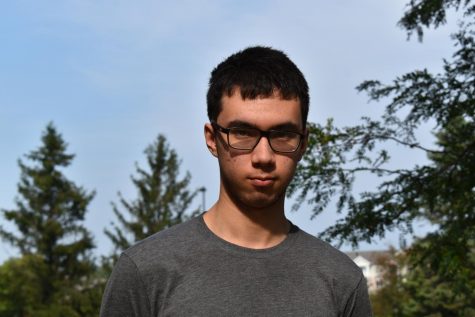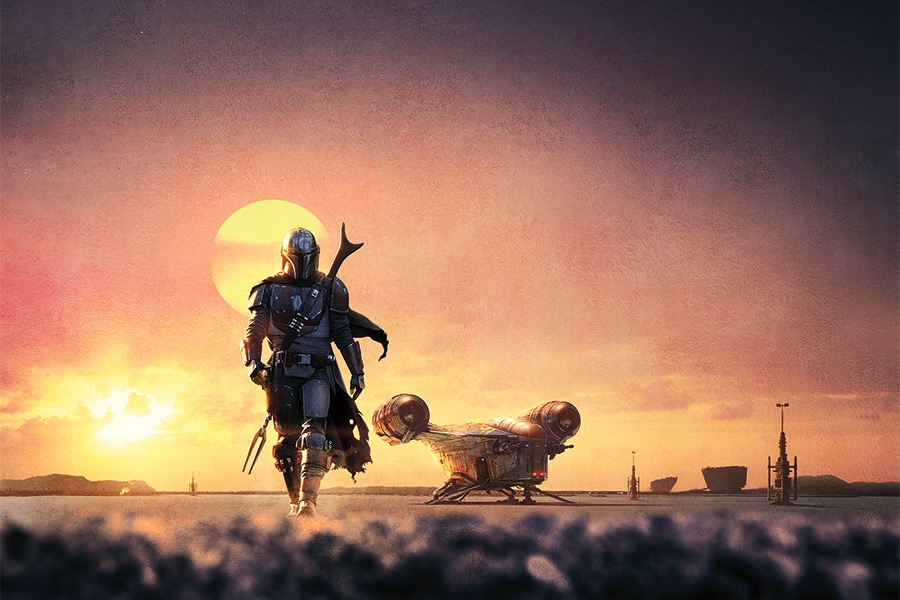“The Mandalorian” is Star Wars at its best
Casual and die hard Star Wars fans alike, prepare to be wowed by “The Mandalorian.”
“The Mandalorian” is the first television show to take place in the Star Wars universe.
By all measures of the word, “The Mandalorian” was always going to be a massive gamble for Disney and Star Wars. First, there’s the obvious: it’s the debut live-action television show for the studio—whether or not it was a success would certainly have a part in determining how future original shows play out. And the premise alone is the very definition of a risk, following a mysterious, faceless antihero bounty hunter who we follow through his dogged adventures with a completely new dramatis personae.
Now that the series has completed its first season, it’s well past time to determine whether the gamble was worth it. Needless to say, the nimble hands of showrunner Jon Favreau are able to guide “The Mandalorian” to the finish line triumphantly with a show that may as well be one of the best projects to come out of Disney’s tenure running the franchise. Be warned of minor spoilers ahead.
Some will only recognize Favreau as playing a character from “Friends,” but his recent work with films like “Iron Man” and helping with the creation of Star Trek’s “The Orville” solidified him as the perfect filmmaker for Star Wars. With “The Mandalorian,” Favreau branches off from his typical all-around lighthearted style to deliver a show that emanates a certain grittiness and that, in recent years, has only been seen with some parts of “Rogue One” in 2016. That’s not to say all the humor and joy are cut out entirely, though. It is, through and through, a true Star Wars story with the very same exuberant space opera and jovial moments interspersed at every turn. It just leans into the groundedness more than you would expect with a Disney-owned Star Wars property. After all, examining the culture of the Mandalorian and the bounty hunting tasks the main character sets forth on are supposed to be taken seriously; the creators full-heartedly realize that and don’t risk wasting it on cheap laughs.

The main character, who has a name revealed in the last episode but is simply called “The Mandalorian” or “Mando” by everyone he associates himself with, is a pinnacle example of bending the “rules” that a prototypical protagonist is supposed to exemplify. Only once do you actually see his face, and you don’t know anything about him aside from minute-long flashbacks in every other episode. His antihero ways and fierce following of the Mandalorian creed also set him off from any other main characters. He is tested at the end of the first episode when he finds out that he has been hunting an adolescent from Yoda’s species (colloquially called “Baby Yoda”), and this examination continues through every episode after. It reveals that The Mandalorian actually has a heart despite his fierceness. There’s one poignant moment in the third episode after he is forced to give Baby Yoda to its captors, and for several moments after when he is about to leave the camera simply pans on his helmet as he sits in silence before he decides to capture Baby Yoda back. Pedro Pascal gives an admirable performance as the character.
The Mandalorian culture in and of itself brings lots of points of discussion. They are characterized by their deft fighting abilities and their constant siding with the now-destroyed Empire (it takes place several years after “The Return of the Jedi”) to hunt down Jedi warriors. When the first episode begins, the Mandalorians have been purged, having to hide in the background due to fear of being exposed. In spite of their dwindling numbers, they continue to withhold their customs of never revealing their faces and demonstrating loyalty to causes they are held to. In particular, the main character’s dedication to following the Mandalorian way is quite interesting to say the least since he was not born into the creed, but rather taken in after nearly being killed in a genocide. The entire exploration of the Mandalorian religion is engrossing for all kinds of fans watching.

The Mandalorian is accompanied by a memorable cast of side characters from Kuiil (voiced by Nick Nolte), the deserted Ugnaught who The Mandalorian befriends on a mission with an adept skill at building and a loyalty to a good cause, Cara Dune (Gina Carano), a bitter Rebellion soldier who lives her days hiding from stormtroopers but aids The Mandalorian when he needs her assistance, to IG-11 (voiced by Taika Waititi), a droid who challenges The Mandalorian’s hatred of robots and fights back from its initial bounty hunting programming, and Moff Gideon (Giancarlo Esposito), the main villain who wants to steal Baby Yoda for cryptic reasons.
To describe “The Mandalorian” as a show, it’s basically the Star Wars equivalent of “The Good, the Bad, and the Ugly” only without any bloody violence. “Solo” tried to be a western but ended up a bland letdown; “The Mandalorian” is the closest we’ll ever get to seeing a true Star Wars western.
“The Mandalorian” is unique in that it has multiple filmmakers filling in the directing slot alongside Favreau’s management. Episodes one and five are directed by Star Wars veteran Dave Filoni; Episodes three and seven are directed by Deborah Chow; Episodes two and six are directed by Rick Famuyiwa; Episode eight is directed by Taika Waititi; Episode four is directed by Bryce Dallas Howard. Chow and Waititi give what are arguably the best episodes in the series, which is exciting since Chow will go on to direct every episode of “Obi-Wan Kenobi” for Disney+ and Waititi will work on his very own Star Wars film a few years down the line.
The problem with “The Mandalorian” lies in the middle three episodes. There, it descends into filler stories that do nothing to further the Baby Yoda plotline. Episode four is a rehash of a previous “Clone Wars” episode and takes a jarring 180 from the events of Episode three. Episode five is by far the worst of the series and features an awful performance from Jake Cannavale and a waste of actress Ming Na-Wen. Episode six is an inconsequential, pointless albeit enjoyable chapter to the story.
If you’re a Star Wars fan and especially one looking for risk-taking—because let’s be real, the Sequel Trilogy took zero risks—then “The Mandalorian” is right up your alley; be sure to keep an eye out for the many scattered easter eggs. If you’re a casual fan who isn’t as excited by the stories more than the sheer jaunty space opera, “The Mandalorian” is also highly recommended. Season two is on its way for this fall and until then, all eight episodes are available right now on Disney+. Grade: A
Your donation will support the student journalists of West High School. Your contribution will allow us to purchase Scholarship Yearbooks, newsroom equipment and cover our annual website hosting costs.

Edward Keen is a senior and this is his second year on staff, where he is Arts Editor. In his free time, he enjoys reading.



